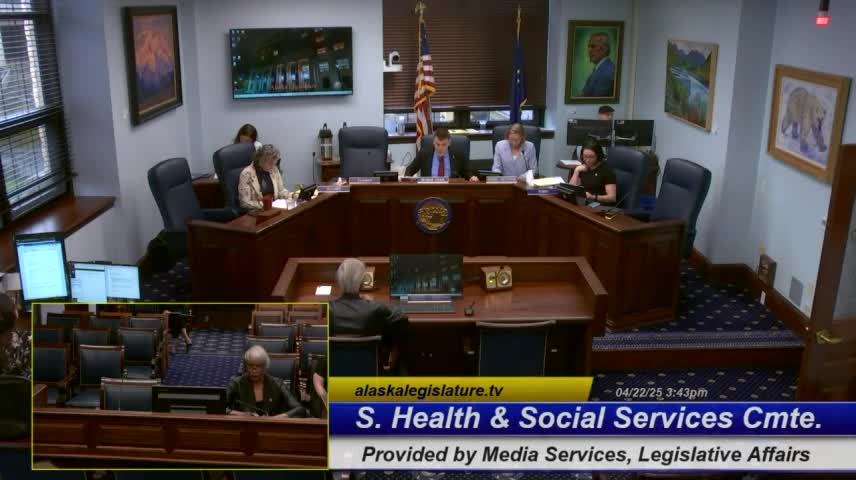Senate committee advances resolution supporting treatment for rare genetic condition
April 22, 2025 | 2025 Legislature Alaska, Alaska
This article was created by AI summarizing key points discussed. AI makes mistakes, so for full details and context, please refer to the video of the full meeting. Please report any errors so we can fix them. Report an error »

In a recent meeting of the Alaska Senate Health and Social Services Committee, a significant discussion emerged surrounding Senate Joint Resolution 16, which aims to support the congressional initiative ensuring coverage for specific medical treatments. The meeting, held on April 22, 2025, featured testimony from Brian Brubaker, a resident of Everett, Alaska, who shared a deeply personal account regarding his daughter’s medical needs.
Brubaker advocated for the resolution, highlighting the challenges faced by families dealing with rare medical conditions, specifically his daughter Emily's hypohydrotic ectodermal dysplasia. This condition requires extensive dental work, which Brubaker noted is currently deemed cosmetic under federal law, leading to a lack of insurance coverage. He emphasized that teeth are essential for proper speech and nutrition, arguing that the classification of necessary medical treatments as cosmetic is a significant barrier for families like his.
The implications of Brubaker's testimony extend beyond individual cases; they reflect a broader issue affecting a small but vulnerable segment of the population. The resolution aims to address these gaps in coverage, potentially influencing future legislation and insurance policies to better support families facing similar challenges.
Following Brubaker's testimony, the committee moved to advance Senate Joint Resolution 16 without objections, indicating a collective recognition of the importance of the issue at hand. The resolution's progression suggests a commitment to addressing healthcare disparities and ensuring that necessary medical treatments are accessible to all Alaskans, regardless of their specific conditions.
As the committee concluded its discussions, the next steps will involve further legislative processes to solidify the resolution's intent and impact. The meeting underscored the ongoing need for advocacy in healthcare policy, particularly for those affected by rare medical conditions.
Brubaker advocated for the resolution, highlighting the challenges faced by families dealing with rare medical conditions, specifically his daughter Emily's hypohydrotic ectodermal dysplasia. This condition requires extensive dental work, which Brubaker noted is currently deemed cosmetic under federal law, leading to a lack of insurance coverage. He emphasized that teeth are essential for proper speech and nutrition, arguing that the classification of necessary medical treatments as cosmetic is a significant barrier for families like his.
The implications of Brubaker's testimony extend beyond individual cases; they reflect a broader issue affecting a small but vulnerable segment of the population. The resolution aims to address these gaps in coverage, potentially influencing future legislation and insurance policies to better support families facing similar challenges.
Following Brubaker's testimony, the committee moved to advance Senate Joint Resolution 16 without objections, indicating a collective recognition of the importance of the issue at hand. The resolution's progression suggests a commitment to addressing healthcare disparities and ensuring that necessary medical treatments are accessible to all Alaskans, regardless of their specific conditions.
As the committee concluded its discussions, the next steps will involve further legislative processes to solidify the resolution's intent and impact. The meeting underscored the ongoing need for advocacy in healthcare policy, particularly for those affected by rare medical conditions.
View full meeting
This article is based on a recent meeting—watch the full video and explore the complete transcript for deeper insights into the discussion.
View full meeting
